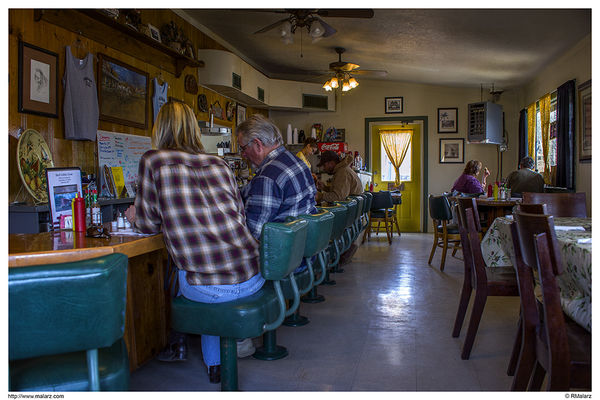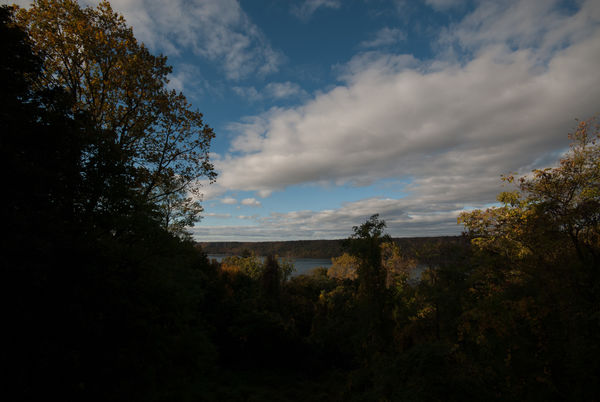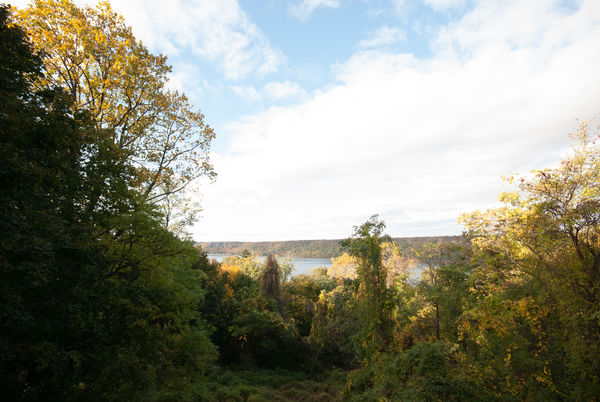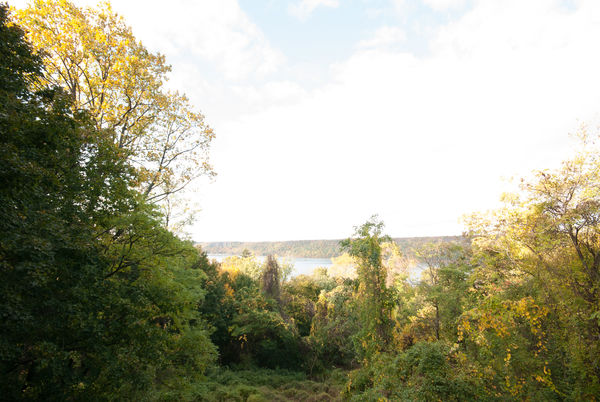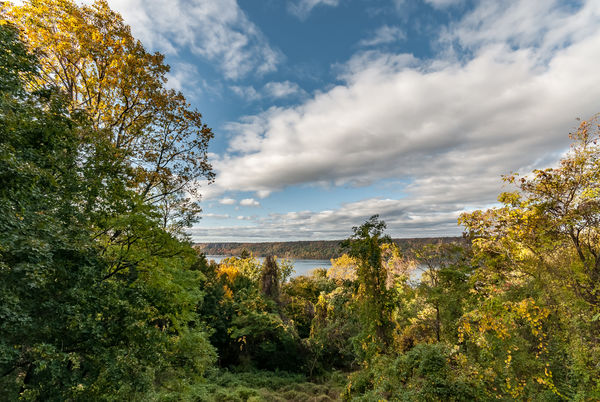Bracketing/Why?
Sep 23, 2017 23:04:11 #
kfoo
Loc: Arkansas
I have read some articles on bracketing. They say that when you bracket photos, you underexpose 1 frame and overexpose 1 frame and 1 just right. If you can go to post processing programs and change everything, what good does it do to bracket if you can change every in pos processing? Am I missing something in these articles? I am just starting in photography and am still learning. Thanks in advance.
Sep 23, 2017 23:10:09 #
There is a lot of lost information in the areas that are over-exposed and under exposed. So by using the details in the shadows and highlights, you can blend them together to create an image with high dynamic range or an HDR image.
Sep 23, 2017 23:23:11 #
If you shoot RAW, you can push the exposure a bit past what the histogram indicates as overexposed. The histogram is generated from the camera derived jpg. The RAW file can hold retrievable data than the jpg histogram indicates. Look for articles here on UHH regarding Expose to the Right (ETTR). Also look to see if there are any ETBR, Expose Beyond the Right. Those will give you some additional information and you may find that taking extra exposures isn't necessary.
Here's an example. http://www.uglyhedgehog.com/t-315416-1.html Initially, the car looks over exposed. However, in post processing one can see that the exposure was quite good.
--Bob
Here's an example. http://www.uglyhedgehog.com/t-315416-1.html Initially, the car looks over exposed. However, in post processing one can see that the exposure was quite good.
--Bob
kfoo wrote:
I have read some articles on bracketing. They say that when you bracket photos, you underexpose 1 frame and overexpose 1 frame and 1 just right. If you can go to post processing programs and change everything, what good does it do to bracket if you can change every in pos processing? Am I missing something in these articles? I am just starting in photography and am still learning. Thanks in advance.
Sep 23, 2017 23:51:46 #
kfoo wrote:
I have read some articles on bracketing. They say that when you bracket photos, you underexpose 1 frame and overexpose 1 frame and 1 just right. If you can go to post processing programs and change everything, what good does it do to bracket if you can change every in pos processing? Am I missing something in these articles? I am just starting in photography and am still learning. Thanks in advance.
There may be subtle lighting and subject differences that most post processing is incapable of correcting optimally. Only one exposure can be optimum ( we are talking very fussy people here - with very high expectations ! )- so the one is picked from the three that offers the best optimization. On the other hand it is possible to COMBINE all three exposures for an HDR effect - if the photographer deems it artistically and technically necessary.
And, just so you know, you can also bracket for focus point as well as exposure - but for most cameras - that must be done totally manually.
Necessarily, most of this bracketing can only be successfully done on inanimate or nearly so subjects.
Sep 23, 2017 23:52:14 #
Two uses. 1) as mentioned, you can combine the extra under and over exposed frames to create an HDR if the dynamic range of the scene requires it, and 2) as Bob just mentioned, you can use it as a sort of "insurance". While some cameras tolerate underexposed shots which are subsequently lifted in post well; others, such as my Canon, perform better if the exposure is pushed as far to the right as possible (using the entire dynamic range of the camera) without blowing out the highlights. Underexposing and then bringing up in post adds unnecessary noise in the shadows, hence the ETTR (expose to the right) and EBTR (expose beyond the right) mentioned above. BUT, if you push it too far, you blow out the highlights, and that's where that exposure 1 stop down can save your highlights. Remember you can't get back highlight detail when the information hasn't been recorded. By the same token, if you get a little too conservative regarding highlights and don't go far enough to the right, that 1 stop over exposure can maintain your highlights while saving some noise in the shadows. You may not meter or expose a challenging scene perfectly, and those extra shots can save your bacon.
Sep 24, 2017 00:38:38 #
Retired fat guy with a camera
Loc: Colorado
I absolutely hate bracketing. I hate the time it takes to delete all the repetitive files. You can fix the exposure in post production. It is turned off on both my cameras.
Or you can spend some money, and buy a digital light meter. I bought a used Sekonic 308 s, on ebay for a 100 dollars. Less files and it is deadly accurate.
Or you can spend some money, and buy a digital light meter. I bought a used Sekonic 308 s, on ebay for a 100 dollars. Less files and it is deadly accurate.
Sep 24, 2017 01:17:07 #
Position yourself inside your house/apartment/whatever where you have a window that faces outside, where the sun has brightly lit the yard. Focus on the window and take a photo. What do you have, a view outside but the interior of the room is dark? Now, take another exposure but use bracketing with + 1 stop. Merge them together in an application that supports HDR. You will see the room and the exterior view exposed correctly.
Thats what bracketing is for.
Thats what bracketing is for.
Sep 24, 2017 02:30:56 #
I will occasionally do a two or three frame exposure bracket with slide film if I feel the shot is really important and I am not entirely sure about the exposure needed. Better safe than sorry.
Sep 24, 2017 03:42:25 #
rook2c4 wrote:
I will occasionally do a two or three frame exposure bracket with slide film if I feel the shot is really important and I am not entirely sure about the exposure needed. Better safe than sorry.
I also shoot film, although I shoot B&W. If I've forgotten my meter, I will estimate the exposure and bracket +2 and -2.
Sep 24, 2017 05:11:55 #
HDR photography can reveal more detail in high contrast scenes. I use Photomatix Pro HDR. They recommend three brackets each two f-stops apart for most scenes. Five brackets for extremely high contrast scenes.
Sep 24, 2017 05:20:21 #
Then again, if you expose correctly and know the limits of your camera, a single exposure accomplishes the same thing.
--Bob
--Bob
rgrenaderphoto wrote:
Position yourself inside your house/apartment/whatever where you have a window that faces outside, where the sun has brightly lit the yard. Focus on the window and take a photo. What do you have, a view outside but the interior of the room is dark? Now, take another exposure but use bracketing with + 1 stop. Merge them together in an application that supports HDR. You will see the room and the exterior view exposed correctly.
Thats what bracketing is for.
Thats what bracketing is for.
Sep 24, 2017 05:42:52 #
rmalarz wrote:
Then again, if you expose correctly and know the limits of your camera, a single exposure accomplishes the same thing.
--Bob
--Bob
If you look out of the window on the door, you can see that the scene outside is blown out. It's just not obvious in this photo because it's a small area in the overall indoor scene.
Sep 24, 2017 06:05:30 #
kfoo wrote:
I have read some articles on bracketing. They say that when you bracket photos, you underexpose 1 frame and overexpose 1 frame and 1 just right. If you can go to post processing programs and change everything, what good does it do to bracket if you can change every in pos processing? Am I missing something in these articles? I am just starting in photography and am still learning. Thanks in advance.
It's really very simple, and it is a technique I used a lot when cameras had less dynamic range than they do now.
If you take a picture of a scene that has a range of contrast that is beyond the cameras ability to record, you have four choices.
1. You can use a middle value for exposure, ensuring that most of the image is properly exposed. In high contrast scenes, the highlights will "blow out", often resulting in areas of detail-less white, and muddy, noisy shadows.
2. You can preserve the highlights, by exposing for them in such a way that they are not "blown out" but very close to being so. Looking at the camera's histogram will show a graph on the back of the camera that indicates where the values of the recorded image are, and the highlights, which are on the right, come right up to the right edge without "clipping" them or blowing them out. You can also turn on the camera's highlight warning to show you any blown highlights as blinking areas. This is fine for some shots, but they will typically render an image darker, which will require some post processing to raise the tonal values of the darker areas, and possibly clean up the noise in those areas differently than you would in the higher tones.
3. You can shoot for the shadows, increasing the exposure that you might normally use so that they are recorded with detail and lower noise. The resulting image may appear a bit lighter, and the highlights will most certainly be blown out.
3. You can use bracketed exposure. This uses all three of the above exposure techniques - and uses software that is able to create a tone mask for specific ranges of tonal values, and just using the best areas of exposure for each range of tonal values, and merging the various masks into a single image.
This is all fine and good, but bracketing has some serious limitations. If anything moves during the three shot capture, it will be blurry in the final image, so it works best with images of static subjects, and worst when there is lots of movement like tree leaves moving in the wind, active human or animal subjects etc.
When it is appropriate, you can make stunning images with very wide dynamic range without the clipping at the extremes (shadows and highlights) that can happen when using just a single exposure. With dynamic ranges on the newer cameras you get dynamic range of 12 stops or more, so there is less of a need to do bracketing. But sometimes you need to do it.
A church interior with gorgeous stained glass windows, waterfalls where the sun is shining on the bright white falling water, and the rest is in shadow, and even a day with an overcast sky, are times when bracketing can help.
Here is one of my early experiments with bracketed shots I took in 2007.
The first was exposed for the sky, letting darker tones fall where they may. Second was exposed for midtones, and much of the sky is clipped, blown out. The third is exposed for shadows, all of the sky is completely and irrevocably lost. The last image is a merged file of the prior three. I used Lightroom's 'Merge to HDR" to quickly create the merged image, with a little bit of adjusting for tonal values and I knocked down the saturation of the sky a bit.
Trying to get all that tonal value in one shot and hoping that post processing can fix the over and underexposed areas was most definitely beyond the capabilities of cameras and software 10 yrs ago. That is the piece you may be missing.
While the subject matter is not great, the setting it good for an illustration of when one might use bracketing and how it works.
Sep 24, 2017 06:09:51 #
If you look at the outside through the window in the door you'd see a plain white building with some "stuff" leaning against the wall. If you look through the window in the wall, where there was stuff, you'll see the stuff that was there. Additionally, if it were blown out, the RGB values would be closer to 255,255, 255 than what is in the photograph.
--Bob
--Bob
CO wrote:
If you look out of the window on the door, you can see that the scene outside is blown out. It's just not obvious in this photo because it's a small area in the overall indoor scene.
Sep 24, 2017 06:20:20 #
kfoo wrote:
I have read some articles on bracketing. They say that when you bracket photos, you underexpose 1 frame and overexpose 1 frame and 1 just right. If you can go to post processing programs and change everything, what good does it do to bracket if you can change every in pos processing? Am I missing something in these articles? I am just starting in photography and am still learning. Thanks in advance.
"Just right" might not be just right, depending on lighting conditions. That's why you bracket - insurance. Yes, you can process any image to make it look better, but wouldn't you rather begin with an image that was close to perfect? Bracketing will give you a choice.
If you want to reply, then register here. Registration is free and your account is created instantly, so you can post right away.






